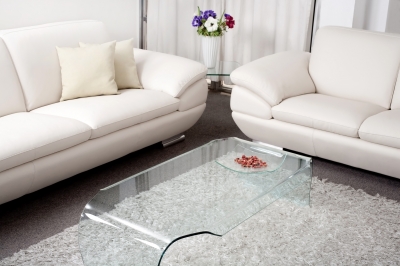I know you will find this shocking — organization is not rocket science. I hate to admit that (as I like to think of myself as pretty bright:-), but it’s true. You could probably clear your piles and keep clutter to a minimum, but you don’t. Why not? Is it a time issue, overwhelm, or maybe you’ve tried but it didn’t work and you gave up quickly? These are a few tried and true tips that I use personally, as well as in my organizing business. The results save time, money, and stress in what is otherwise a crazy and complicated world.
Treat Your Drawers With Respect – Any drawer can be come a junk drawer if you just randomly toss items into it. All the drawers in your home should have a defined purpose, socks, shirts, hardware, supplies, silverware, cooking utensils, just to name a few. To keep items inside from becoming a cluttered mess, invest in drawer organizers. Drawer organizers are available at many home stores as well as online and are worth the investment. They can separate your toothbrush from your cotton swabs, pens and pencils from post-its, and batteries from flashlights and light bulbs (just for clarification: each set of items is a separate drawer).
Purge When Your Containers Are Full – A general rule of a good organization system is that “like” items are grouped together. Bins, baskets and other containers make grouping “like” items more efficient and keep the items inside from spreading to other areas. When containers become a visual eyesore, then you know it’s time to purge. For example, if you’ve been following me for any length of time, you know how much I stress the importance of having an inbox for your mail and incoming paperwork. However, your inbox is not meant to be a filing cabinet or catch all. When it starts to get full, it’s time to go through and process the items inside. Or, if your kids toy bins are spilling onto the floor, it’s time sort the items inside, get rid of the broken items, purge as needed, and get the remaining items into their proper home.
Make Things Easy To Put Away – Stacked bins and boxes look great and closed lids can hide a lot of clutter. However if you can’t easily put something away, you probably won’t do it. If possible, store things in open containers. This includes art supplies, office supplies, bathroom supplies, medicines, snack bars, and other grab-n-go items. A client of mine recently removed her hamper with a lid from the back of her closet. She replaced it with an open laundry container in the corner of her room. Suddenly her husband was actually putting his clothes in the laundry container, rather than dropping them on the floor. Problem solved!
The Container Comes Last – Most people who decide to get organized immediately head out and buy a bunch of containers. Containers are great and there are a wide variety of options in various colors and styles, but they will not solve your clutter problem on their own. If you just randomly toss your stuff in containers without purging or giving any thought to why you accumulated the clutter in the first place, the piles will quickly return. In addition, soon enough you’ll find yourself simply moving the containers from place to place just to make room for the newly accumulated clutter. Purge first, containerize last!
Eliminate Clutter Magnets – Your dining room table, entryway table, and kitchen counters are easy dumping spots for mail, homework, purses, backpacks and other items your family brings into your home. Create a nightly routine to clear your horizontal surfaces and keep clutter to a minimum. If that does not work or you’re having trouble getting family buy-in for your system, then change your tactic. Fill your horizontal surfaces with decorative items or set your dining table after each meal so there is no place for people to drop their stuff.
Items Used Often Should Be Easily Accessible – There’s a difference between how often you access your camping gear and holiday decorations from how often you access guest bedding and towels. Yet often the items you only use once or twice a year take up prime real estate in your home. Use high shelving, attics, and garages for infrequently used items. Make your closet and pantry shelves a place for storing the items you use most often. Store items used frequently on shelves at eye-level, or just above or below. No reaching or bending required.
Try to incorporate at least one of these tips into your organization plan in order to save yourself time, money, and sanity. If you’re still struggling, assistance from More Time For You is just an email away.
*Photo courtesy of photostock at freedigitalphotos.net


